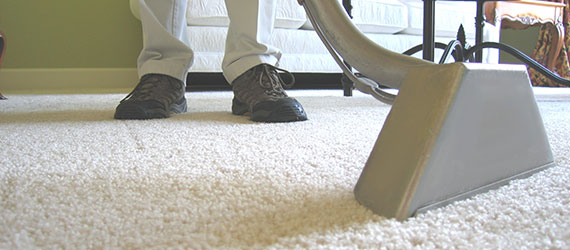Sustainable cleaning Step 1 – choosing equipment
Cleaning machines and equipment must work efficiently and effectively with the cleaning products and tools used to deliver the most sustainable cleaning process overall. So while the sustainability characteristics of the equipment are very important, equipment must be selected, installed and operated to dovetail with these other components of the process.
Benefits of mechanization and equipment
Many high throughput cleaning processes, such as professional laundry or warewashing, simply could not be undertaken without substantial equipment. In contrast, in some areas of building cleaning for example, predominantly manual methods remain the most practical and sustainable option.

As well as the economic and social benefits of better productivity and reduced physical labour, mechanization can help reduce consumption of cleaning products to a minimum, and in some cases allow lower temperatures to be used. Partly this arises because cleaning efficacy depends upon a combination of mechanical action, chemical action, temperature and time. Mechanical action helps remove dirt and reduces the contribution needed from the other inputs. Mechanization also provides the opportunity for highly controlled or automated dosing which can directly optimize use of cleaning products.
Effective cleaning, which for items like carpets is only practicable with equipment such as vacuum cleaners, benefits sustainability by reducing wear and prolonging the life of materials.
Sustainability impacts from cleaning equipment
In terms of environmental impacts, cleaning equipment consumes two important resources – energy and water – as well as cleaning products and other consumables such as cleaning brushes and pads. Minimising these impacts depends not only on good initial selection and design, but on ensuring equipment is properly serviced and maintained so it is reliable, and using good dosing control. Precise dosing not only avoids waste but avoids under-dosing which can lead to inadequate cleaning, re-work and customer dissatisfaction.
Normally, the resources consumed in manufacturing the equipment are small compared with those consumed during use.
Cleaning equipment can also have an environmental impact by generating noise. This is also a social impact, as is the vibration that often accompanies the noise, for machines held or manoeuvered by an operator.
Cleaning equipment and sustainability – floor cleaning as an example
The patterns and importance of different impacts associated with cleaning equipment vary considerably from one process to another. It’s easier to see the way impacts arise and how they can be managed, by considering a more specific cleaning task. The case of floor cleaning using items like rotary and vacuum cleaners and scrubber driers, is considered below:
- Energy useWhen choosing floor cleaning equipment it’s important not just to look at the power ‘rating’ of the equipment e.g. 800W, but to consider how much cleaning it does per unit of time. A 1000W unit uses more power than an 800W one, but if it does the same cleaning in half the time, the amount of energy used to do the job is much less.
- With battery-powered equipment, a key factor is the ‘charge efficiency’ of the battery – how much electrical energy has to be put into the battery when charging to get how much back out when the equipment is being used. A higher charge efficiency also helps prolong the life of the battery, so the resource consumed in making the battery and the waste created when it is disposed of or process impacts from recycling are both reduced.Water useAdvanced machines now provide a variable feed to the cleaning heads according to speed, dosing less at lower speed, when turning corners etc. This not only optimizes use of water and cleaning product, it avoids leaving wet patches that delay re-opening of the floor and present a possible slip hazard.Machines that make efficient use of water can receive Water Technology List accreditation, which confers eligibility for enhanced capital allowances.
- Cleaning product dosingConventional dosing of product into the ‘wash-water’ tank can be efficient provided the whole tank is used. Where the tank is only part used, bacterial growth in the tank can become an issue as many floor-cleaning products are neutral pH, especially at in-use dilution. At these dilutions, preservatives added to protect the concentrate will be ineffective, and odours or more seriously bacterial spread can result. Part-using tanks can also give rise to waste if a different product needs to be applied.One solution to these problems is machines that dose the concentrate precisely and directly at the point of use (i.e. close to the brushes or pads). Easily loaded pouches of superconcentrate product mean product can be changed with little waste, and minimal risk of spills or exposure of the operator to neat product.
- NoiseLow noise machines not only reduce the direct social and environmental impacts of noise, they make possible significant savings in energy use by allowing cleaning during normal daylight working hours. This allows organisations to move away from the practice of out-of-hours cleaning, with substantial energy savings from not having to heat and light the building for an additional period. Daytime cleaning reduces unsocial hours working and favours full-time rather than part-time employment.ErgonomicsFloor-cleaning machines are often heavy: ergonomic design minimises the risk of strains and the consequences of bad posture. Rotary machines especially can be the source of vibrations which can lead to injuries and painful, disabling conditions. Good ergonomics and vibration control are thus important features from the social sustainability perspective.